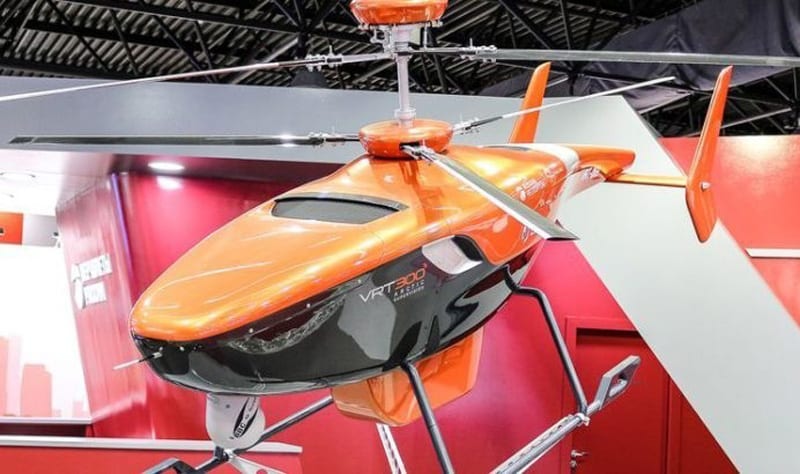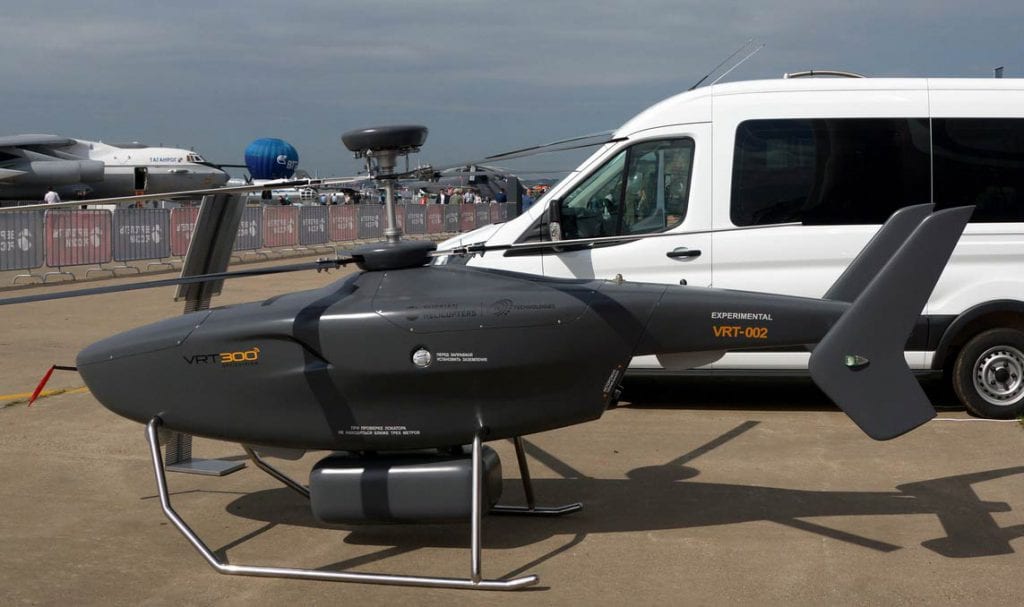
News
Russian Drone Tech Launches Bench Tests for VRT300 Unmanned Helicopter, Designs New Prototype
A Russian autonomous helicopter manufacturer has announced it is moving steadily ahead in its mission to grab a sizable hold of the global unmanned civil helicopter market.
VR-Technologies, which forms the design arm of aircraft maker Russian Helicopters, has ready developed its VRT300 unmanned system which is available in two configurations. The company is also looking forward to the development of a further UAV copter model, the VRT500.
The first, named the Arctic Supervision, boasts a side-view radar for reconnaissance and operation in icy conditions, while the second, which has an increased flight range allowing it to be commissioned for monitoring and remote sensing operations, is named the Opticvision.
In preparation for aircraft flight tests of the VRT300 by the end of this year, VR-Technologies have made a prototype with a maximum take off weight of 300 kilos that they will now use to bench test the entire systems and equipment of the UAV.
The prototype’s functional and technical configurations have been designed according to input from various Russian companies and authorities, it was reported in the company’s press release.
“To date, we have defined configuration and technical requirements for this helicopter, and carried out an extensive work to select suppliers of the main systems and assemblies of VRT300,” said Alexander Okhonko, VR-Technologies director general. “The start of bench tests serves as a reference point, and if everything goes as planned, by the end of this year we will start flight tests. Technical solutions of VRT300 will ensure the level of failure-free operation, reliability and safety that is required for the operation in the international market of civil UAVs.”
Primary requirements for the VRT300 Arctic Supervisionare the capability to assist in the expansion of transport infrastructure of the Northern Sea Route. The onboard side-mounted high resolution radar will also allow for accurate assessment of ice sheet dynamics, increasing efforts in Arctic exploration.
With a heavy-oil engine and maximum payload of 70 kilos, the manufacturers expect the Arctic Supervision VRT300 will be invaluable for icebreakers and drilling platforms.

The OpticVision VRT300 | A.V. Karpenko
The Opticvision VRT300 has been designed with improved diagnostic systems, preventing and eliminating emergency situations in the energy and transport sectors. These capabilities will also make it ideal for power line inspection, monitoring of the environment, roads and road-side infrastructure, exploration and mapping, and cargo transportation.
In addition to the bench testing of the VRT300, Russian Helicopters has also announced it intends to start development of the new model, the VRT500, envisioning a launch by the end of 2019.
The VRT500 forms the heavy duty partner to the lightweight VRT300, with a 1,600kg take-off weight, a top speed of 230km/h and an immense range of 1,000 km. Able to carry a payload of up to 750kg, it will be available in five versions, the company said, including passenger, utility, cargo, training VIP and Medevac configurations.
“This helicopter combines high flight performance and a great price with operating costs, in addition to its spacious cabin, the largest in its class. These characteristics shall allow VRT500 to occupy up to 15% of the global market of civil helicopters with maximum take-off weight up to 2 tons. We expect to produce and sell an average of 700 helicopters by 2030,” Okhonko said.
The company is not limiting its commercial reach to the so called ‘first-world’ markets such as North America and Europe, with Okhonko stating that the 30% of the target market for this model range to be Latin America and the Caribbean.




















